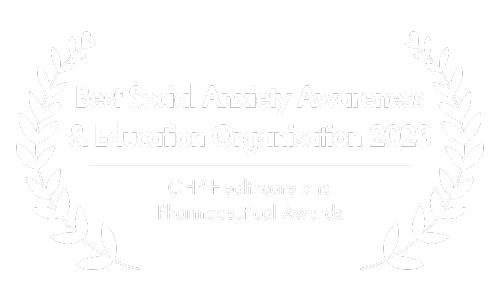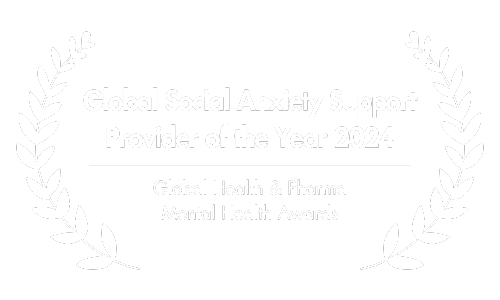Breath by Breath: Conquering Social Anxiety with Deep Breathing
This article includes a recommended meditation app and a workbook that facilitate mindful breathing practice. By using our links, you may receive a discount and we will earn a commission.
Do you ever find yourself caught in the grip of unease before a social interaction? That heart-pounding sensation, the knot in your stomach, the relentless worry about being judged or scrutinized? You’re not alone.
Social anxiety disorder affects millions of individuals worldwide, with a prevalence of approximately 12% (Kessler et al., 2005).
Now imagine there was a way to quiet those anxious whispers, to regain control of your emotions, and to face social situations with a newfound sense of confidence…

Enter the transformative power of deep breathing – a simple yet profound technique that can be your steadfast companion in the journey toward managing social anxiety.
Deep breathing is a powerful tool that offers individuals with social anxiety a way to alleviate their symptoms and regain a sense of control over their emotions.
In this article, we will delve into the rationale behind deep breathing as a technique for managing social anxiety and provide a practical guide for incorporating deep breathing into daily life.
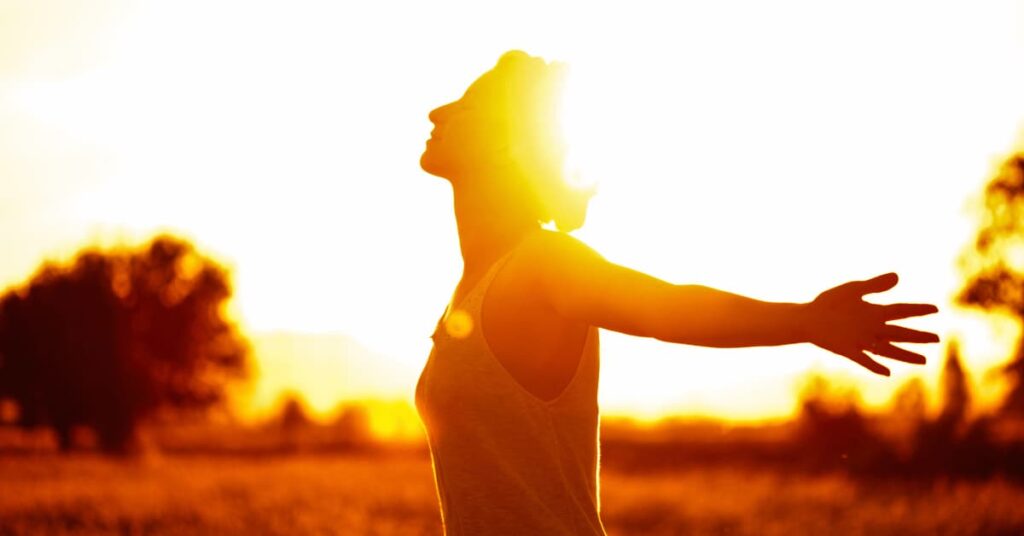
By understanding the science behind deep breathing and mastering the techniques, you can unlock a pathway to greater emotional well-being and improved social interactions.
Please note: If you have pre-existing respiratory conditions or any health concerns, it’s advisable to consult with your healthcare provider before incorporating any deep breathing techniques into your routine
Let’s begin.
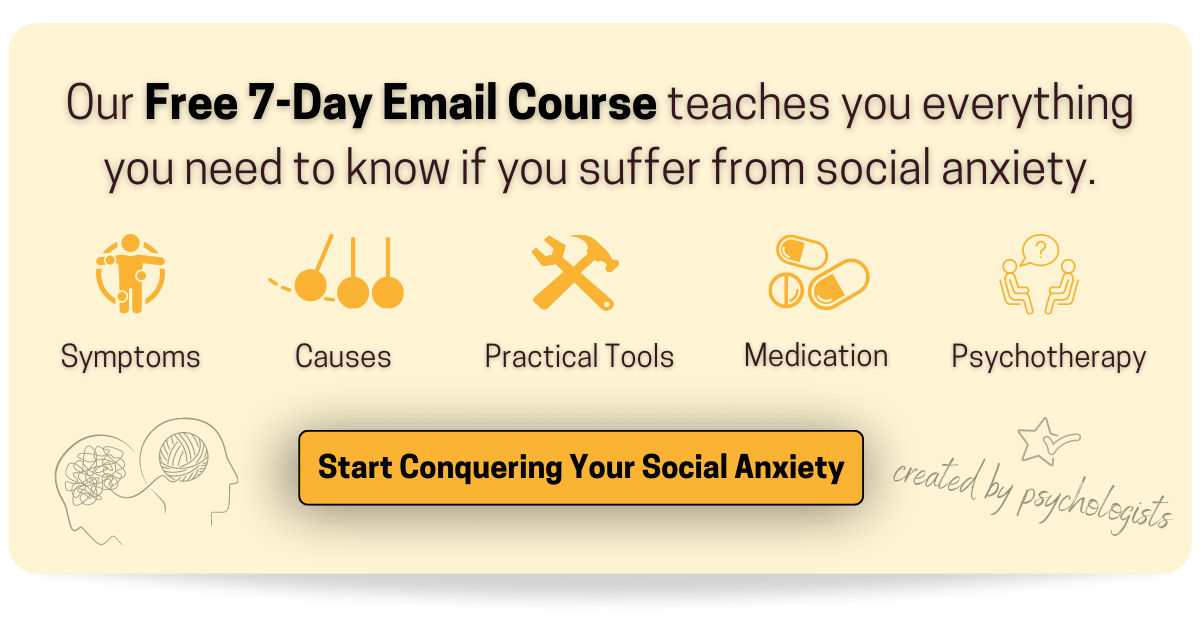
A. Rationale for Deep Breathing
Alleviating Social Anxiety Symptoms
Deep breathing is a simple yet potent technique that holds the key to managing the distressing symptoms of social anxiety.
While social anxiety may feel overwhelming, deep breathing offers a way to interrupt the cycle of anxiety and bring about a sense of tranquility.
By engaging in deep, controlled breaths, individuals can counteract the physical and emotional responses typically triggered in stressful situations and even increase their heart rate variability, which is associated with improved physical and mental health (Tharion et al., 2012).
This can help individuals reduce the symptoms associated with social anxiety, such as rapid heart rate, shallow breathing, and racing thoughts.
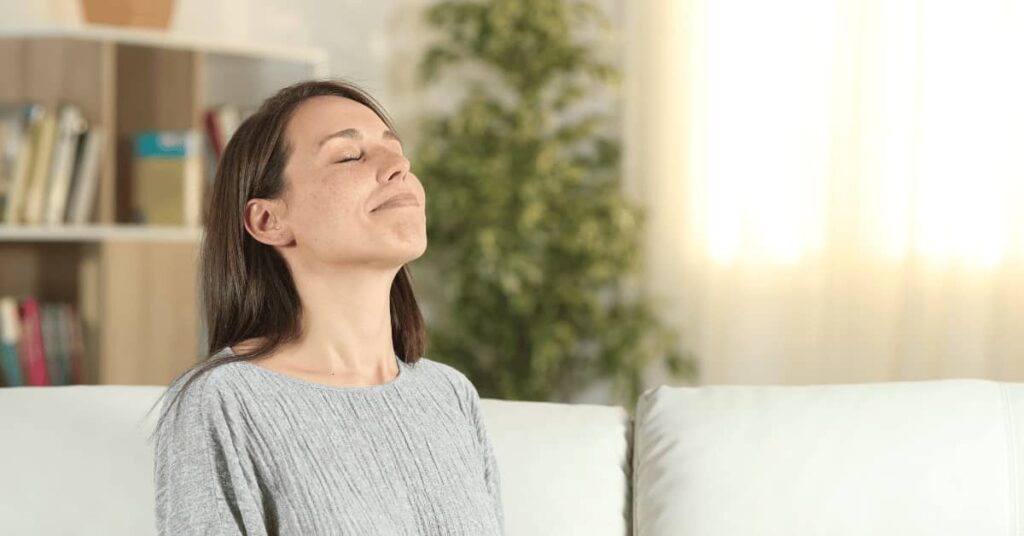
Physiological Mechanisms
The practice of deep breathing triggers a cascade of physiological responses that directly counteract the body’s stress response.
When faced with a triggering social situation, the body often enters a “fight or flight” mode, characterized by the release of stress hormones like cortisol and heightened physiological arousal.
Deep breathing activates the body’s “relaxation response“, which involves the parasympathetic nervous system.
This response leads to a decrease in heart rate, lowered blood pressure, and reduced muscle tension (Vlemincx et al., 2016).

Psychological Mechanisms
Social anxiety often involves negative self-perception and catastrophic thinking patterns.
Deep breathing serves as a mindfulness technique that encourages individuals to focus on their breath and the present moment.
This shift in attention allows individuals to step away from distressing thoughts, break the cycle of rumination, and cultivate a sense of inner calm.
Over time, the practice of deep breathing can enhance emotional regulation, reducing the intensity of anxious feelings and promoting a more balanced perspective on social interactions (Sajidah et al., 2021).
Additionally, deep breathing helps alleviate physical tension, particularly among individuals with high anxiety sensitivity (Khng, 2017), a common trait in people with social anxiety.

B. Benefits of Deep Breathing for Social Anxiety
Relaxation and Emotional Regulation
Deep breathing offers a myriad of benefits for individuals grappling with social anxiety. One of its primary advantages lies in its ability to induce a state of relaxation.
As individuals engage in deep, deliberate breaths, the body’s stress response begins to wane, leading to a decrease in tension and a sense of calm (Ma et al., 2017).
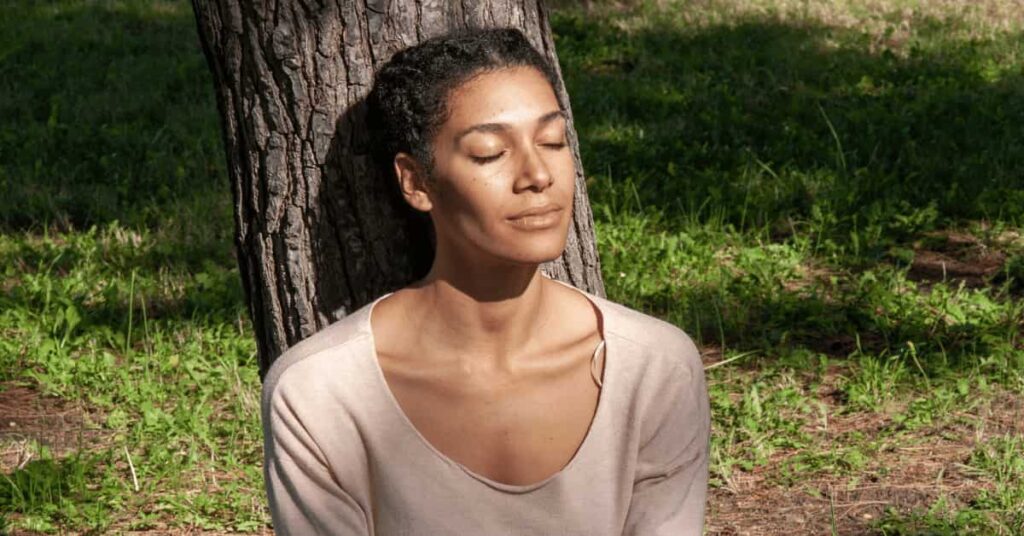
This relaxation response extends beyond the physical realm, influencing emotional well-being as well.
Through deep breathing, individuals can gain greater control over their emotional reactions, enabling them to respond to social situations with greater composure and less distress.
Reducing Anxiety
The hallmark of social anxiety is the intense fear of negative evaluation and judgment by others (American Psychiatric Association, 2013).
This fear often triggers the body’s stress response, leading to heightened anxiety symptoms.
Deep breathing serves as a countermeasure, effectively dampening the body’s stress response and reducing the intensity of anxiety.

By activating the relaxation response, deep breathing helps lower heart rate, stabilize breathing patterns, and decrease muscle tension, all of which contribute to a noticeable reduction in overall anxiety levels (Perciavalle et al., 2017).
Enhancing Overall Well-Being
Beyond its immediate impact on anxiety, deep breathing has far-reaching implications for overall well-being.
Regular practice of deep breathing can foster a sense of self-empowerment and mastery over anxiety symptoms.
As individuals become proficient in deep breathing techniques, they may experience increased confidence in their ability to cope with social situations.
This newfound sense of control can translate into greater engagement in social interactions, improved self-esteem, and an enhanced quality of life.

Promoting Mindfulness and Present Moment Awareness
Deep breathing is inherently mindful, requiring individuals to focus their attention on the rhythm of their breath.
This mindfulness practice cultivates present moment awareness, allowing individuals to detach from worries about past or future social experiences.
By staying grounded in the present, individuals can approach social situations with a clear mind and reduced preoccupation with judgment or criticism.
Overall, research reveals that the benefits of slow and deep breathing extend beyond immediate relaxation.
Through increased heart rate variability and respiratory sinus arrhythmia, individuals can experience reduced symptoms of anxiety, depression, and even heightened emotional control (Zaccaro et al., 2018).
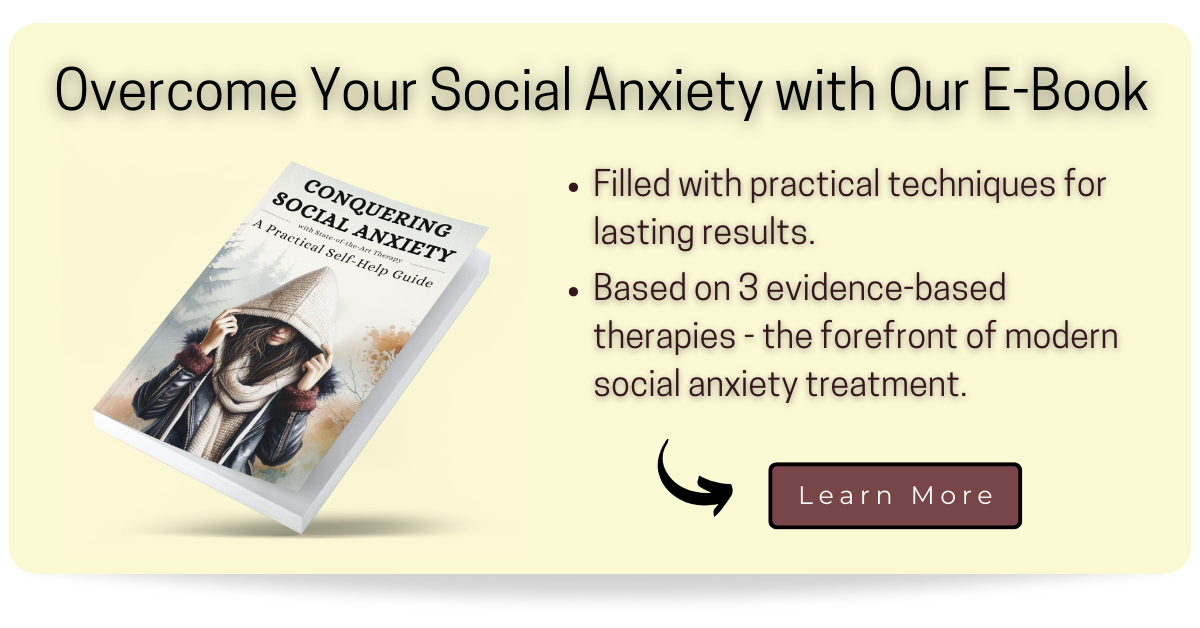
C. Step-by-Step Guide to Practicing Deep Breathing
Discreet Practice Anywhere
Social anxiety can strike at any moment, most typically right before or during social interactions.
You can practice deep breathing discreetly, even in the midst of a stressful situation.
While the ideal scenario involves finding a tranquil environment, it’s not always feasible.
In such cases, you can discreetly center your attention on your breath, without drawing notice to your deep breathing practice.
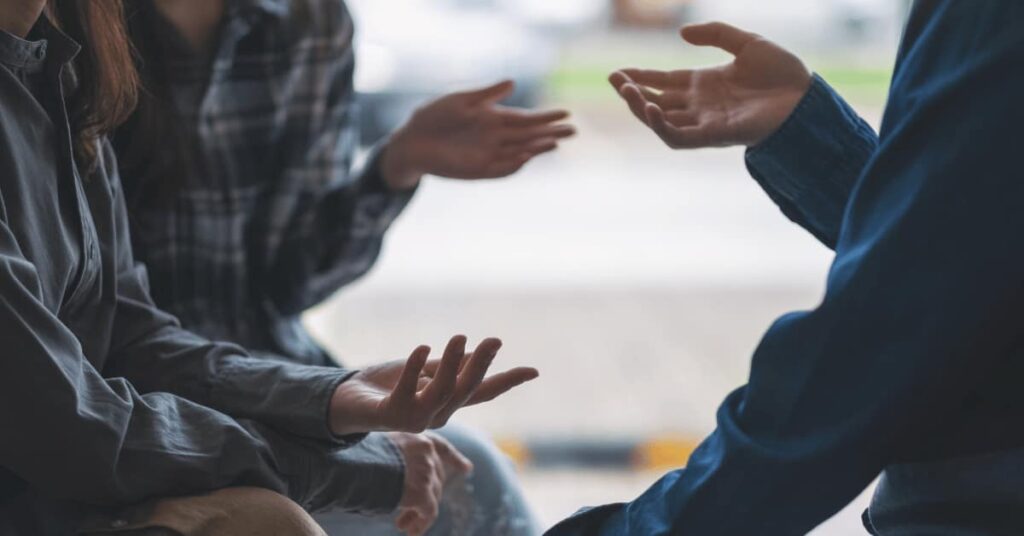
Depending on the situation, some individuals also find it beneficial to focus on the ongoing conversation, the task at hand, or the immediate surroundings, while taking slow and deep breaths.
Relax your facial expressions and keep your posture natural.
Subtly shift your attention to your breath whenever needed, whether you’re in a meeting, at a party, or waiting in line.
Comfortable Posture
Prioritize a posture that promotes relaxation and self-assuredness. Sit or stand in a natural, confident manner, allowing your body to find its ease.
Feel free to rest your hands naturally, whether by your side or gently clasped. This gesture not only helps you feel grounded but also encourages a genuine and engaged presence.

Diaphragmatic Breathing Technique
Diaphragmatic breathing, also known as belly breathing, is a foundational deep breathing technique.
Diaphragmatic breathing engages the diaphragm muscle, promoting a full exchange of oxygen and carbon dioxide.
- Inhale quietly through your nose for a count of 4, allowing your abdomen to rise naturally. Adjust the count as needed for your comfort.
- Exhale softly through your mouth for a count of 4, releasing tension from your body. Feel free to lengthen or shorten the count based on your well-being.
- Keep your breaths gentle and controlled, making it imperceptible to others. Customize the pace to match your comfort level.
This technique helps reduce shallow breathing, increase oxygen flow, and trigger the relaxation response, making it an effective tool for calming social anxiety.

Box Breathing Technique
Box breathing, also referred to as square breathing, involves a structured pattern of inhaling, holding, exhaling, and resting.
- Inhale subtly through your nose for a count of 4, filling your lungs completely. Modify the count to best suit your breathing pattern.
- Hold your breath discreetly for a count of 4, feeling the pause with serenity. Adjust the duration based on what feels right for you.
- Exhale quietly through your mouth for the same count of 4, letting go of any stress. Adapt the count to your breathing preferences. You can also exhale through your nose to not draw attention to your breathing.
- Rest without breathing for a composed count of 4 before resuming. Extend or shorten the pause as it aligns with your relaxation.
This rhythmic pattern promotes balance and symmetry in breathing, encourages mindfulness, and can effectively disrupt anxious thought patterns.
Box breathing’s predictable sequence helps regulate the nervous system and provides a sense of control over anxiety-related physiological responses.
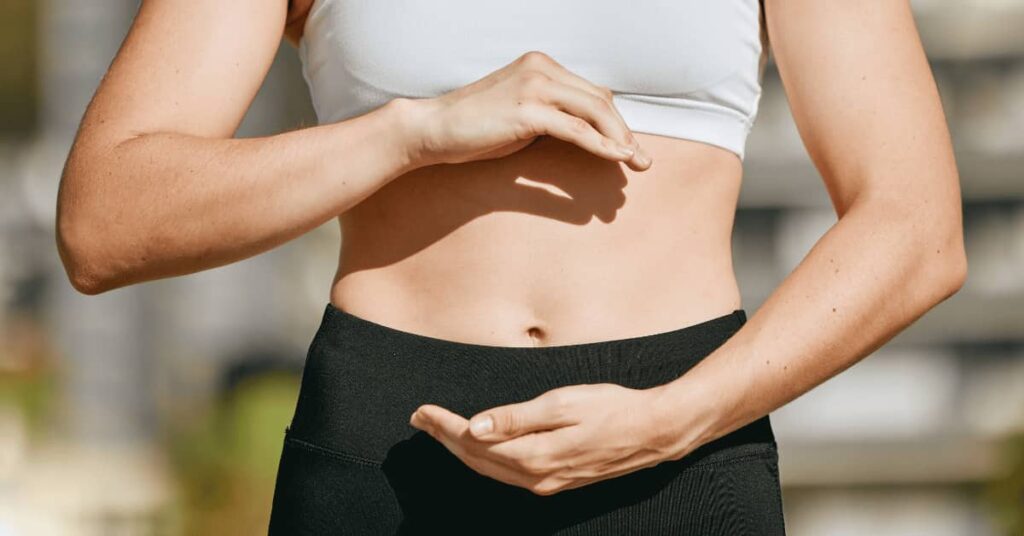
Paced Breathing Technique
Paced breathing involves coordinating your breath with a specific count or rhythm.
A common approach is the 4-7-8 technique. Adjust the timing to fit your unique needs to ensure safety.
- Sync your breath with a subtle counting rhythm: Inhale through your nose for a count of four, hold your breath for a count of seven, and exhale through your mouth for a count of eight.
- Inhale noiselessly through your nose, letting your breath fill you with calm. Adjust the duration according to your breath’s natural pace.
- Hold your breath discreetly for a count of seven, maintaining a sense of tranquility. Feel free to adjust the duration for your own relaxation.
- Exhale gently through your mouth, releasing any tension for a count of eight. Adapt the count to your comfort level.
- Continue this pattern in a manner that doesn’t attract attention, ensuring a seamless flow of relaxation that suits your unique needs and well-being.
This technique extends the exhalation phase, triggering the body’s relaxation response.
Paced breathing enhances oxygenation, reduces the heart rate, and counteracts the effects of shallow, rapid breathing often associated with social anxiety.

Focus and Mindfulness
Remain mindful of your breath while staying engaged in the situation.
Keep your facial expressions relaxed and natural.
If you need a moment of calm, subtly turn your attention to your breath, aligning it with the pace of the interaction.
Practicing deep breathing discreetly empowers you to manage social anxiety on the spot, fostering a sense of control and calmness during challenging moments.
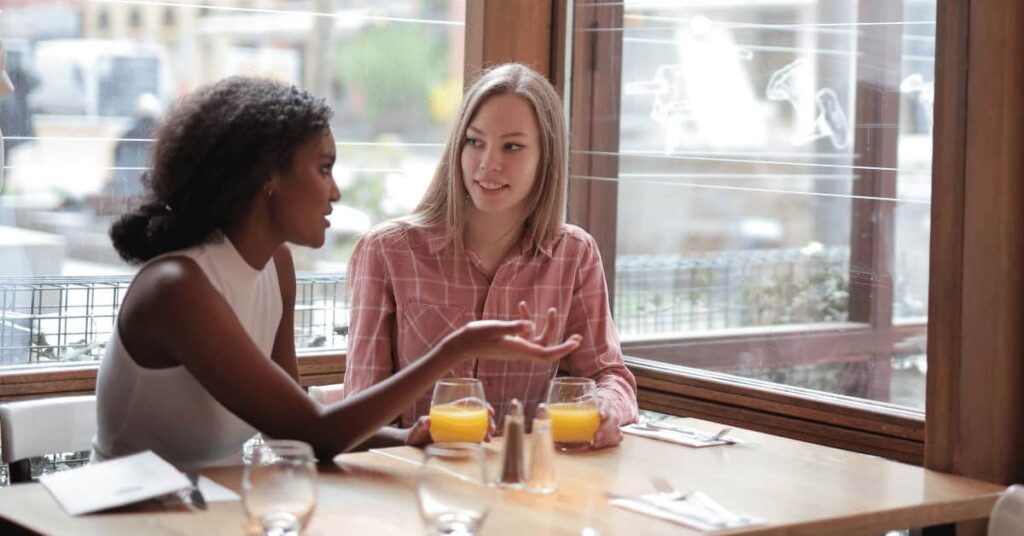
D. Incorporating Deep Breathing into Daily Life
Consistent practice of deep breathing is key to developing mastery over anxiety.
By incorporating deep breathing into your daily routine, you build a reliable toolset that empowers you to navigate social interactions with confidence and composure, regardless of anxiety levels.
Morning Mindfulness
Begin your day with a few minutes of deep breathing.
As you wake up, take a moment to sit or lie down comfortably and practice a round of diaphragmatic or box breathing.
This gentle start can set a calm tone for the day ahead.

Before Challenging Moments
Prior to engaging in social interactions that trigger anxiety, discreetly practice deep breathing to ground yourself.
Whether it’s before a presentation, a meeting, or a social gathering, take a few moments to engage in deep breathing techniques like paced or box breathing.
This can help you ease nervousness, promote a sense of calm, and approach the situation with greater composure.

Transition Breaths
Use deep breathing as a transition tool between tasks or activities.
When moving from one situation to another, take a brief moment to practice a round of paced breathing.
This can help you shift your focus, release tension, and mentally prepare for social interactions.
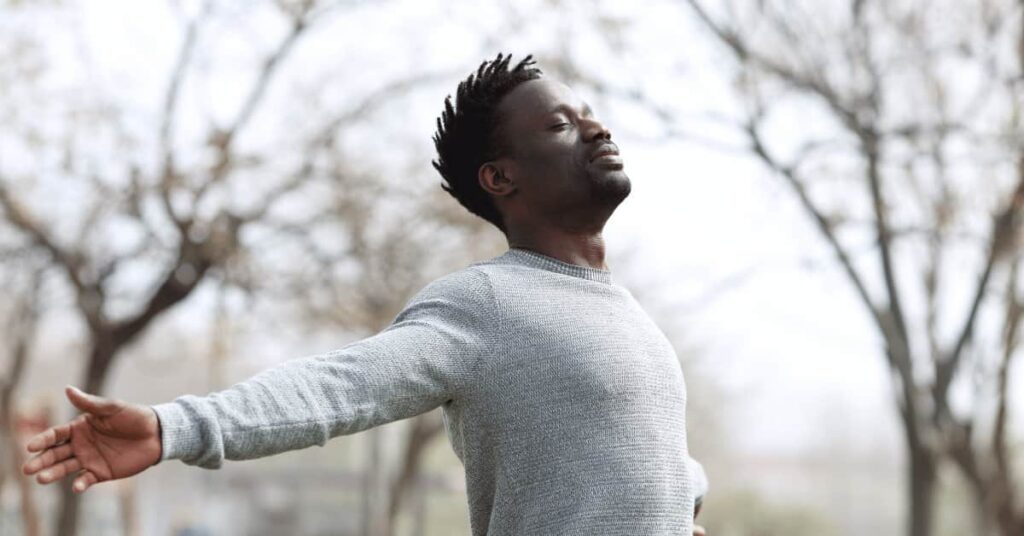
Breathing Breaks
Incorporate short deep breathing breaks into your daily routine.
Set aside a few minutes during breaks or lunchtime to engage in a round of box breathing.
This practice can help you recharge, reduce stress, and enhance your overall mood, especially during the workday when social interactions may occur.
Bedtime Relaxation
Before bedtime, engage in deep breathing to unwind and relax.
Choose a calming technique that resonates with you, and use it to create a soothing pre-sleep routine.
Deep breathing can facilitate better sleep and alleviate any residual anxiety from social interactions during the day.
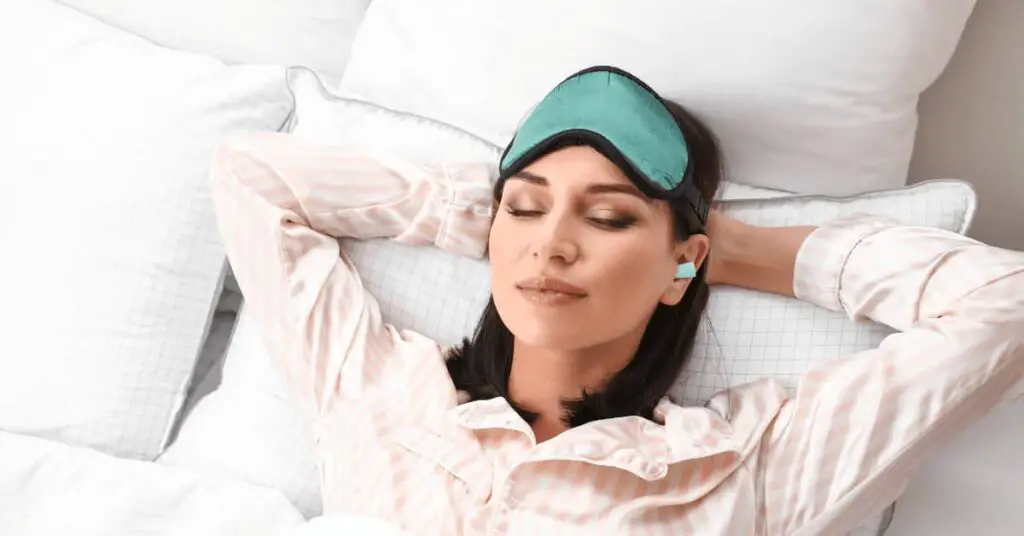
Benefits of Consistency
Consistency is key when it comes to managing social anxiety through deep breathing, even during social situations themselves.
While practicing deep breathing discreetly during conversations is an option, it’s important to recognize that everyone’s experience is unique.
Some individuals may find it beneficial to focus on the content of the conversation, while others may find subtle deep breathing helpful.
Ultimately, finding what works best for you is key to effectively integrating deep breathing into your daily life and managing social anxiety.

E. Additional Strategies and Resources
Cognitive-Behavioral Techniques (CBT)
Cognitive-Behavioral Therapy (CBT) is an evidence-based approach that focuses on identifying and challenging negative thought patterns and behaviors associated with social anxiety.
CBT equips individuals with practical skills to reframe anxious beliefs and develop effective coping strategies.
If you’re interested in learning more about CBT and its application to managing social anxiety, you can read our introductory guide by clicking here.

Psychodynamic Therapy (PDT)
Psychodynamic therapy (PDT) delves into the underlying psychological factors contributing to social anxiety.
Through self-reflection and exploration of past experiences, individuals can gain insights into the root causes of their anxiety.
PDT emphasizes building self-awareness and fostering a deeper understanding of one’s emotions and relationships.
To explore more about PDT and its relevance to managing social anxiety, you can access our introductory guide by clicking here.

Beyond CBT and PDT, a diverse range of psychotherapeutic approaches has demonstrated efficacy in alleviating social anxiety symptoms.
For a comprehensive exploration of these various techniques and their applications, you’re invited to explore our all-in-one guide to social anxiety treatment by clikcing here.
Reputable Resources
The Mindfulness and Acceptance Workbook
For those who discover solace in the benefits of deep breathing and mindfulness, we warmly endorse the Mindfulness and Acceptance Workbook by Jan Fleming and Nancy Kocovski, two esteemed experts in social anxiety, mindfulness, and acceptance and commitment therapy.
It presents a potent program that complements these practices and has helped many people effectively reduce their anxiety and social distress. It is available for purchase here.

Headspace
Headspace, a widely acclaimed mindfulness and meditation app, offers a wealth of guided practices and comprehensive courses specifically designed to cultivate mindfulness skills and alleviate anxiety.
Tailored to resonate with individuals who find comfort in deep breathing and mindfulness, Headspace equips users with tools to navigate social anxiety more adeptly.

Studies have demonstrated significant improvements in irritability, affect, and stress resulting from external pressure (Economides et al., 2018), as well as a significant reduction in anxiety and worry after using Headspace for four weeks (Abbott et al., 2023).
These positive results were also confirmed after rigorously considering potential conflicts of interest in these studies (O’Daffer et al., 2022).
You can easily download the app by clicking here. You will be able to try the app for free for 7-14 days to see if you benefit from it.
If you are a student, you should click here instead to receive a significant student discount after the trial period.
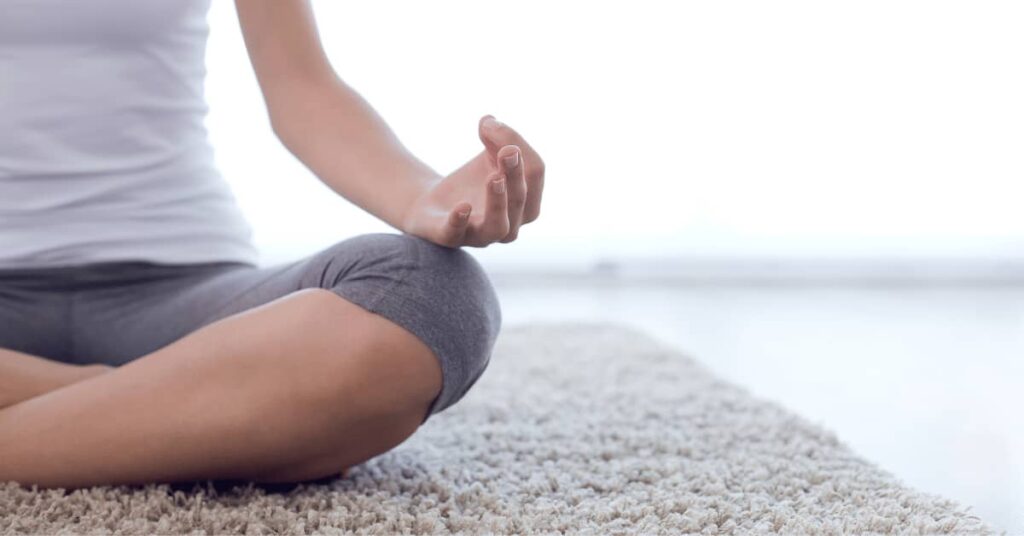
F. Conclusion
Managing social anxiety is a journey that requires patience, self-compassion, and a toolkit of effective strategies.
Throughout this article, we’ve explored the transformative power of deep breathing as a versatile and accessible tool in your pursuit of emotional well-being.
By understanding the rationale behind deep breathing, its benefits for anxiety reduction, and the various techniques you can employ, you’ve gained valuable insights into harnessing its potential.
As you navigate social interactions and face anxiety-triggering situations, remember that deep breathing is your steadfast ally.

Whether you incorporate it into your daily routine, discreetly practice it during social moments, or combine it with other complementary techniques, deep breathing offers you a way to cultivate calmness, regain control, and enhance your overall quality of life.
For a deeper exploration of practical tools, exercises, and strategies aimed at alleviating social anxiety, we invite you to click here and delve into our comprehensive article featuring 20 techniques tailored to support your journey towards greater well-being.
Participate in a Research Study!
If you are affected by social anxiety, you can help researchers and clinicians better understand the condition and improve treatment efficacy by participating in a research study.
To take part, you can click here to open a short, quick survey in a new browser window, or simply fill out the form provided below. Thank you for your participation!
Abbott, D., Lack, C. W., & Anderson, P. (2023). Does Using a Mindfulness App Reduce Anxiety and Worry? A Randomized-Controlled Trial. Journal of cognitive psychotherapy, 37(1), 26–42. https://doi.org/10.1891/JCPSY-D-20-00058
American Psychiatric Association. (2013). Diagnostic and statistical manual of mental disorders (5th ed.). https://doi.org/10.1176/appi.books.9780890425596
Economides, M., Martman, J., Bell, M. J., & Sanderson, B. (2018). Improvements in Stress, Affect, and Irritability Following Brief Use of a Mindfulness-based Smartphone App: A Randomized Controlled Trial. Mindfulness, 9(5), 1584–1593. https://doi.org/10.1007/s12671-018-0905-4
Kessler, R. C., Berglund, P., Demler, O., Jin, R., Merikangas, K. R., & Walters, E. E. (2005). Lifetime prevalence and age-of-onset distributions of DSM-IV disorders in the National Comorbidity Survey Replication. Archives of general psychiatry, 62(6), 593–602. https://doi.org/10.1001/archpsyc.62.6.593
Khng, K. H. (2017) A better state-of-mind: deep breathing reduces state anxiety and enhances test performance through regulating test cognitions in children, Cognition and Emotion, 31:7, 1502-1510, DOI: 10.1080/02699931.2016.1233095
Ma, X., Yue, Z. Q., Gong, Z. Q., Zhang, H., Duan, N. Y., Shi, Y. T., Wei, G. X., & Li, Y. F. (2017). The Effect of Diaphragmatic Breathing on Attention, Negative Affect and Stress in Healthy Adults. Frontiers in psychology, 8, 874. https://doi.org/10.3389/fpsyg.2017.00874
O’Daffer, A., Colt, S. F., Wasil, A. R., & Lau, N. (2022). Efficacy and Conflicts of Interest in Randomized Controlled Trials Evaluating Headspace and Calm Apps: Systematic Review. JMIR mental health, 9(9), e40924. https://doi.org/10.2196/40924
Perciavalle, V., Blandini, M., Fecarotta, P., Buscemi, A., Di Corrado, D., Bertolo, L., Fichera, F., & Coco, M. (2017). The role of deep breathing on stress. Neurological sciences : official journal of the Italian Neurological Society and of the Italian Society of Clinical Neurophysiology, 38(3), 451–458. https://doi.org/10.1007/s10072-016-2790-8
Sajidah, H., Khairunnisa, S., & Nabila, C. (2021). The Effect Of Relaxing A Deep Breath On Anxiety Levels. KESANS : International Journal of Health and Science.
Tharion, E., Samuel, P., Rajalakshmi, R., Gnanasenthil, G., & Subramanian, R. K. (2012). Influence of deep breathing exercise on spontaneous respiratory rate and heart rate variability: a randomised controlled trial in healthy subjects. Indian journal of physiology and pharmacology, 56(1), 80–87.
Vlemincx, E., Van Diest, I., & Van den Bergh, O. (2016). A sigh of relief or a sigh to relieve: The psychological and physiological relief effect of deep breaths. Physiology & behavior, 165, 127–135. https://doi.org/10.1016/j.physbeh.2016.07.004
Zaccaro, A., Piarulli, A., Laurino, M., Garbella, E., Menicucci, D., Neri, B., & Gemignani, A. (2018). How Breath-Control Can Change Your Life: A Systematic Review on Psycho-Physiological Correlates of Slow Breathing. Frontiers in human neuroscience, 12, 353. https://doi.org/10.3389/fnhum.2018.00353
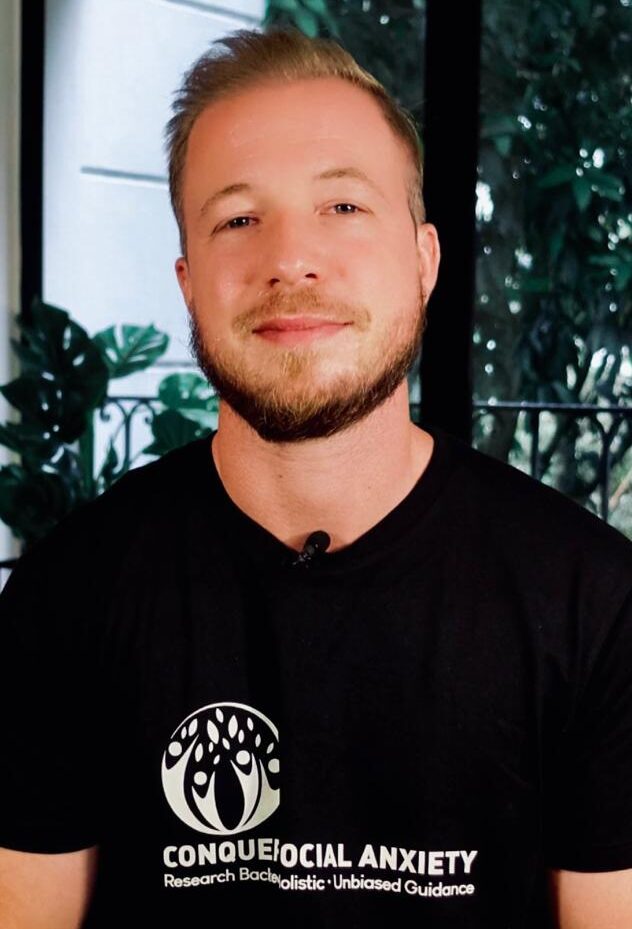
About the Author: Martin Stork
Martin is a professional psychologist with a background in physical therapy. He has organized and led various support groups for people with social anxiety in Washington, DC and Buenos Aires, Argentina. He is the founder of Conquer Social Anxiety Ltd, where he operates as a writer, therapist and director. You can click here to find out more about Martin.







